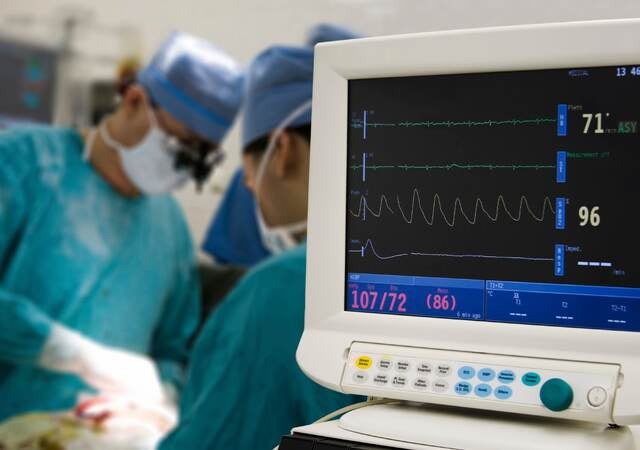December 21, 2023
It was an exciting year of regulatory news for medical device quality assurance and regulatory affairs. A delay to legislation in the EU and the mandatory use of an electronic format in the US occurred, among other developments. And, there were many examples of leveraging global regulatory authorizations as well as signs that the International Medical Device Regulators Forum’s (IMDRF) working groups have been making progress. We’ve taken this opportunity to highlight some of the most significant medical device regulatory developments in 2023.
Delay in Europe for legacy medical device compliance
Many guidance documents from the Medical Device Coordinating Group (MDCG) and others were published and updated:
- The European Commission (EC) survey of notified body data on Medical Devices Regulation (MDR 2017/745) and In Vitro Diagnostic Devices Regulation (IVDR 2017/746) applications and certificates was released.
- The MDR amending legislation, Regulation 2023/607 took effect. Regulation 2023/607 permitted a longer transition time for legacy devices, under certain conditions (to the end of 2027 or 2028 dependent on risk classification).
While device manufacturers were relieved to be granted more time, Regulation 2023/607 has also had a global impact and advanced the concept that this may be the easiest time to transfer medical device notified bodies (before May 26, 2024). There are now 42 and 12 notified bodies to the MDR and IVDR, respectively; however, the survey data indicates that manufacturers’ applications are still incomplete and the time to secure a MDR or IVDR certificate is protracted.
2024 will be the year for legacy device manufacturers to get their agreements and contracts are in place with their notified bodies, and for manufacturers of legacy Class D IVDs to begin their compliance journeys if they haven’t already done so (deadline: May 26, 2025). For those seeking a refresher during the calendar year break, we have posted a series on EU legislation.
US FDA officially implements electronic submission templates
The US FDA made progress with an electronic submission template in 2023 and published many guidance documents as initial drafts, final versions or revisions. Of note, the FDA finalized guidance titled Content of Premarket Submissions for Device Software Functions as well as Cybersecurity in Medical Devices: Quality System Considerations and Content of Premarket Submissions.
Manufacturers and the FDA secured voluntary experience with the electronic Submission Template And Resource (eSTAR) through most of 2023. The FDA released preSTAR Version 0.1 (June 6) to provide manufacturers a template for pre-submissions.
Use of eSTAR became compulsory for 510(k) submissions to the US FDA on October 1, 2023. Two months later, eSTAR Version 5.0 was released (December 6, 2023), which permitted the voluntary use of eSTAR for higher-risk medical device submissions, Pre Market Approvals (PMA).
We fully expect continued use of eSTAR and preSTAR with submissions to the US FDA.
Brazil ANVISA revises RDC 751/2001 after 21 years
A major update to the medical device registration process in Brazil was promulgated by ANVISA in Resolution RDC 751/2022, which became effective in March 2023. It was a long awaited update to many aspects of registration, including to device classification (to align with the EU MDR) as well as the format of submissions (to align with IMDRF guidance on submissions (table of contents for medical devices)).
There were two consultations proposed to leverage regulatory authorizations from four of the former Global Harmonization Task Force (GHTF) founding members to expedite the ANVISA review process, and to extend validity of Medical Device Single Audit Program (MDSAP) certificates used for Brazilian Good Manufacturing Practices (B-GMPs) to four years.
And, as promised by ANVISA, Resolution RDC 830/2023 on IVDs to align with the medical device revisions from RDC 751/2022 was released on December 11, just before the end of the year.
In 2024, we will secure more experience with registro submissions (Class III and Class IV) to ANVISA in compliance to RDC 751/2022, and anticipate more guidance related to the implementation of RDC 830/2023, as well as legislation to leverage authorizations and extend B-GMP certificates.
Mexico COFEPRIS releases Edition 5.0 of the Mexican Pharmacopoeia
The Mexican Pharmacopoeia Edition 5.0 “Suplemento” as well the effective date, 60 calendar days later (10 July), both occurred in 2023. New definitions, terms, classification rules and concepts were part of the update. Most significant was the inclusion of a definition for software as a medical device (SaMD) and the corresponding addition of Annex X to the Suplemento.
Other developments in Israel and Thailand
Amendments to the medical device regulatory system in Israel were announced (August 14): immediate registration for Class I devices, expedited review times by AMAR (15 days) when there were two regulatory authorizations leveraged for a Class II device, and when only the US FDA was used for a Class II device (60 days).
While released in 2022, the Thai Food and Drug Administration (FDA) gained experience this year with the Regulatory Reliance Program to expedite the review time (and decrease fees) with Class B, Class C and Class D devices already authorized by the Singapore Health Sciences Authority (HSA).
Global medical device and IVD regulatory news
As the 2023 Chair and Secretariat, the EC hosted the two IMDRF meetings. In addition, to progress on the use of eSTAR as a global harmonized submission template (Health Canada pilot), many guidance documents were revised or issued. The IMDRF released their Progress Report Card for the 2021-2025 Strategic Plan.
Emergo would posit that this was definitely a year for global harmonization.
Concluding remarks
As QA/RA professionals, we are passionate about regulatory updates and even more exuberant about regulatory developments advancing global harmonization. We posted over 100 Regulatory Updates and Regulatory Insights in 2023. 2023 heralded many global regulatory
We remain optimistic and even more excited for 2024 as we can’t wait to see what the new year brings! We’re grateful to you and all our supporters.
Request more information from our specialists
Thanks for your interest in our products and services. Let's collect some information so we can connect you with the right person.







